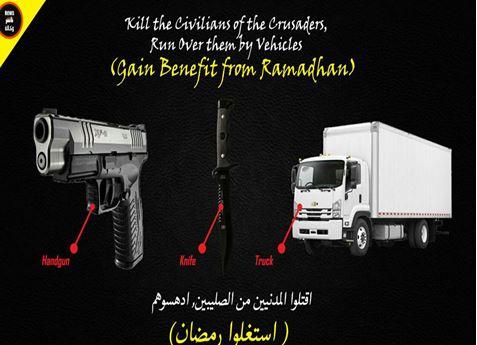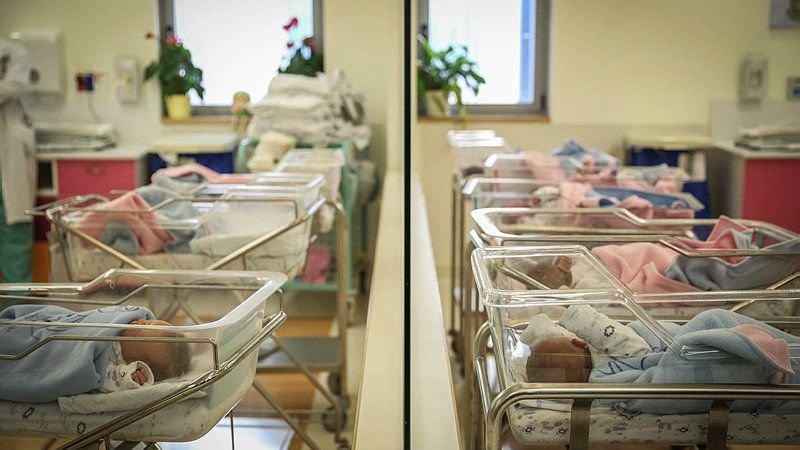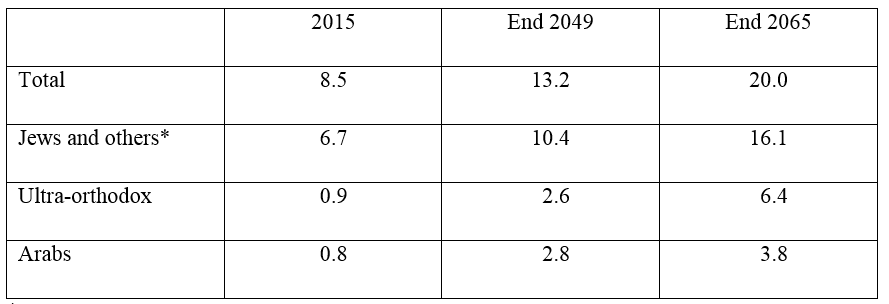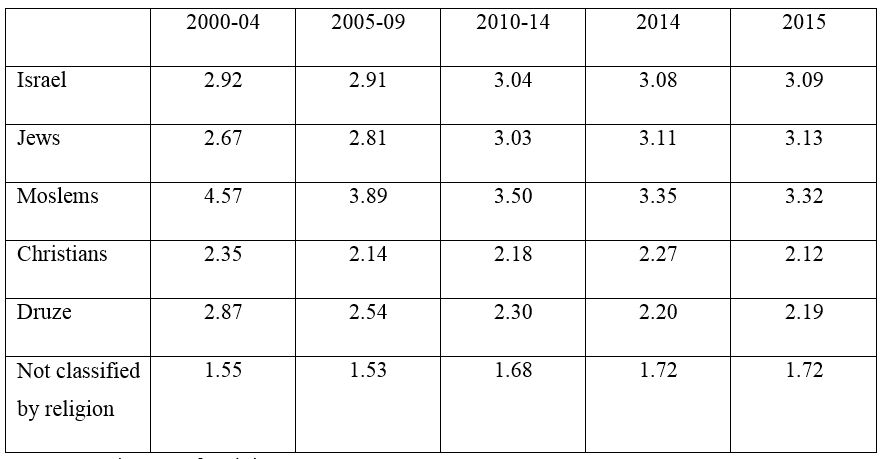1. List of Journals
AMERICAN JOURNAL OF SOCIOLOGY, May 2017 (Vol. 122, No. 6)
ARAB STUDIES JOURNAL, Spring 2017 (Vol. 25, No. 1)
ARMED FORCES & SOCIETY, July 2017 (Vol. 43, No. 3)
ASIAN JOURNAL OF SOCIAL SCIENCE, (Vol. 45, No. 3, 2017)
BRITISH JOURNAL OF MIDDLE EASTERN STUDIES, (Vol. 44, No. 2, 2017)
BRITISH JOURNAL OF MIDDLE EASTERN STUDIES, (Vol. 44, No. 3, 2017)
LES CAHIERS DE L'ORIENT, Hiver 2017 (No. 125)
LES CAHIERS DE L'ORIENT, Printemps 2017 (No. 126)
THE CAIRO REVIEW OF GLOBAL AFFAIRS, Spring 2017 (No. 25)
COMPARATIVE EDUCATION REVIEW, May 2017 (Vol. 61, No. 2)
COMPARATIVE POLITICAL STUDIES, August 2017 (Vol. 50, No. 9)
COMPARATIVE SOCIOLOGY, (Vol. 16, No. 3, 2017)
CONFLUENCES MEDITERRANÉE, Hiver 2016-2017 (No. 99)
CRITICAL INQUIRY, Summer 2017 (Vol. 43, No. 4)
DISCOURSE & COMMUNICATION, June 2017 (Vol. 11, No. 3)
ETHNICITIES, June 2017 (Vol. 17, No. 3)
HISTORICAL MATERIALISM, (Vol. 25, No. 1, 2017)
INTERNATIONAL COMMUNICATION GAZETTE, June 2017 (Vol. 79, No. 4)
INTERNATIONAL POLITICAL SCIENCE REVIEW, June 2017 (Vol. 38, No. 3)
IRANIAN STUDIES, (Vol. 50, No. 2, 2017)
IRANIAN STUDIES, (Vol. 50, No. 3, 2017)
ISLAM AND CHRISTIAN-MUSLIM RELATIONS, (Vol. 28, No. 3, 2017)
JOURNAL OF ASIAN AND AFRICAN STUDIES, May 2017 (Vol. 52, No. 3)
JOURNAL OF CONTEMPORARY HISTORY, July 2017 (Vol. 52, No. 3)
JOURNAL OF LIBRARIANSHIP AND INFORMATION SCIENCE, June 2017 (Vol. 49, No. 2)
THE JOURNAL OF THE MIDDLE EAST AND AFRICA, (Vol. 8, No. 1, 2017)
JOURNAL OF MIGRATION HISTORY, (Vol. 3, No. 1, 2017)
JOURNAL OF PALESTINE STUDIES, Spring 2017 (Vol. 46, No. 3)
JOURNAL OF THE ROYAL ANTHROPOLOGICAL INSTITUTE, June 2017 (Vol. 23, No. 2)
JOURNAL OF SOUTH ASIAN AND MIDDLE EASTERN STUDIES, Winter 2017 (Vol. 40, No. 2)
LONDON REVIEW OF BOOKS, June 2017 (Vol. 39, No. 12)
THE MAGHREB REVIEW, (Vol. 42, No. 1, 2017)
THE MAGHREB REVIEW, (Vol. 42, No. 2, 2017)
MEDITERRANEAN QUARTERLY, March 2017 (Vol. 28, No. 1)
MELA NOTES, (No. 89, 2016)
MIDDLE EAST CRITIQUE, (Vol. 26, No. 2, 2017)
MIDDLE EAST DEVELOPMENT JOURNAL, (Vol. 9, No. 1, 2017)
MIDDLE EAST FERTILITY SOCIETY JOURNAL, June 2017 (Vol. 22, No. 2)
THE MIDDLE EAST JOURNAL, Spring 2017 (Vol. 71, No. 2)
MIDDLE EAST POLICY, Summer 2017 (Vol. 24, No. 2)
MIDDLE EASTERN STUDIES, (Vol. 53, No. 5, 2017)
MODERN JUDAISM, May 2017 (Vol. 37, No. 2)
NEW MEDIA & SOCIETY, May 2017 (Vol. 19, No. 5)
NEW PERSPECTIVES QUARTERLY, May 2017 (Vol. 34, No. 2)
ORIENT, (Vol. 58, No. 2, 2017)
PALESTINE-ISRAEL JOURNAL OF POLITICS, ECONOMICS AND CULTURE, (Vol. 21, No. 4, 2016)
PALESTINE-ISRAEL JOURNAL OF POLITICS, ECONOMICS AND CULTURE, (Vol. 22, No. 1, 2017)
POLITICAL SCIENCE QUARTERLY, Spring 2017 (Vol. 132, No. 1)
POLITIQUE ÉTRANGÈRE, Printemps 2017 (No. 1)
RACE & CLASS, April-June 2017 (Vol. 58, No. 4)
RACE & CLASS, July-September 2017 (Vol. 59, No. 1)
SOCIAL SERVICE REVIEW, June 2017 (Vol. 91, No. 2)
TERRORISM AND POLITICAL VIOLENCE, (Vol. 29, No. 4, 2017)
DIE WELT DES ISLAMS, (Vol. 57, No. 2, 2017)
2. Articles from Journals
AMERICAN JOURNAL OF SOCIOLOGY, May 2017 (Vol. 122, No. 6)
Anıl Divarcı Çakmaklı, Christophe Boone and Arjen van Witteloostuijn, "When Does Globalization Lead to Local Adaptation? The Emergence of Hybrid Islamic Schools in Turkey, 1985-2007" [1822-1868]
http://www.journals.uchicago.edu
ARAB STUDIES JOURNAL, Spring 2017 (Vol. 25, No. 1)
Ghenwa Hayek, "Making Ordinary: Recuperating the Everyday in Post-2005 Beirut Novels" [8-28]
Geoffrey P. Levin, "Arab Students, American Jewish Insecurities, and the End of Pro-Arab Politics in Mainstream America, 1952-1973" [30-58]
Jamil Mouawad and Hannes Bauman, "In Search of the Lebanese State" [60-64]
Jamil Mouawad and Hannes Baumann, "Wayn Al-Dawla?: Locating the Lebanese State in Social Theory" [66-90]
Dylan Baun, "The Gemmayzeh Incident of 1949: Conflict over Physical and Symbolic Space in Beirut" [92-122]
Samar Kanafani, "On Deference and Benevolence: The Politics of Parking in Beirut" [124-149]
ARMED FORCES & SOCIETY, July 2017 (Vol. 43, No. 3)
Ayşegül Kars Kaynar, "Political Activism of the National Security Council in Turkey After the Reforms" [*]
ASIAN JOURNAL OF SOCIAL SCIENCE, (Vol. 45, No. 3, 2017)
Ela Ataç, "Turkish-Style Segregation" [235-270]
http://booksandjournals.brillonline.com
BRITISH JOURNAL OF MIDDLE EASTERN STUDIES, (Vol. 44, No. 2, 2017)
Raymond A. Hinnebusch, "Political Parties in MENA: Their Functions and Development" [159-175]
Mona Tajali, "Protesting Gender Discrimination from Within: Women's Political Representation on Behalf of Islamic Parties" [176-193]
Christian Thuselt, "'We Wander in Your Footsteps'– Reciprocity and Contractility in Lebanese Personality-Centred Parties" [194-210]
Marie Vannetzel, "The Party, the Gama'a and the Tanzim: The Organizational Dynamics of the Egyptian Muslim Brotherhood's Post-2011 Failure" [211-226]
Joseph Sassoon, "Party and Governance in the Arab Republics" [227-239]
Zehra F. Kabasakal Arat, "Political Parties and Women's Rights in Turkey" [240-254]
Khalil Dahbi, "The Historical Emergence and Transformation of the Moroccan Political Party Field" [255-267]
Francesco Saverio Leopardi, "The Popular Front for the Liberation of Palestine during the First Intifada: From Opportunity to Marginalization (1987-1990)" [268-282]
BRITISH JOURNAL OF MIDDLE EASTERN STUDIES, (Vol. 44, No. 3, 2017)
Philipp O. Amour, "Israel, the Arab Spring, and the Unfolding Regional Order in the Middle East: A Strategic Assessment in Turkey" [293-309]
"Participatory Governance or Deliberative Disjuncture? Exploring the State-Civil Society Policy Nexus in the Gender Mainstreaming Programmes of Seven Middle Eastern States 2005-2015" [310-332]
Omar Hesham AlShehabi, "Contested Modernity: Divided Rule and the Birth of Sectarianism, Nationalism, and Absolutism in Bahrain" [333-355]
JoséCiro Martínez, "Jordan's Self-Fulfilling Prophecy: The Production of Feeble Political Parties and the Perceived Perils of Democracy" [356-372]
Rachel Busbridge, "The Wall has Feet but so Do We: Palestinian Workers in Israel and the 'Separation' Wall" [373-390]
David Kaposi, "A Proper Study of the Discourse on the Israeli-Palestinian Conflict? Methodological Implications of a Large-Scale Study of the First Gaza War" [391-407]
Nedim Nomer, "Ziya Gökalp's Idea of Cultural Hybridity" [408-428]
Lawrence Rubin, "Islamic Political Activism among Israel's Negev Bedouin" [429-446]
Yinon Shlomo, "The Israeli-Egyptian Talks at Kilometer 101" [447-463]
LES CAHIERS DE L'ORIENT, Hiver 2017 (No. 125)
Mouna A. Akouri, "L'Enseignement de Gamal Al Banna" [11-46]
Gamal Al Banna, "Vers une nouvelle jurisprucence islamique (Document)" [47-88]
Ghaleb Bencheikh, "Fondamentalisme et modernité" [89-102]
Didier Destremau, "L'islam, un mutant?" [103-112]
Anne de Luca, "L'art de la guerre en islam" [113-142]
Nathalie Truchot, "Les defies de Sissi" [143-154]
Colette Juilliard, "L'Iran entre images et clichés" [155-166]
https://lescahiersdelorient.org
LES CAHIERS DE L'ORIENT, Printemps 2017 (No. 126)
Alexandre del Valle, "The Erdogan Phenomenon and the New 'National-Islamist' Turkey" [9-40]
Raphaël Gourrada, "Syria as Seen from Lebanon: Interactions and Political Positions" [41-62]
Étienne Houssin, "The Kurds of Syria, a Nation without a State" [63-82]
Pierre Conesa, François Bernard Huyghe and Margaux Chouraqui, "Daesh's Francophone Communication, the Mythology of the Happy Fighter" [83-94]
Anne de Luca, "The Sources of Muslim Laws: When the Shari'a does not Say Everything" [95-106]
Marie-José, "Robert Solé: A Passion for Egypt (Interview)" [107-120]
Colette Juilliard, "Ingres, from Lady Montagu to The Turkish Bath" [121-140]
https://lescahiersdelorient.org
THE CAIRO REVIEW OF GLOBAL AFFAIRS, Spring 2017 (No. 25)
<<Special Issue: Fifty Years After 1967>>
Jonathan Guyer, "Plight of an Arab Intellectual" [*]
Hala Al-Dosari, "Saudi Arabia's Post-Oil Future" [*]
Stein Ringen, "Trump, Congress, and Democracy" [*]
Ahmad Samih Khalidi, "Ripples of the 1967 War" [*]
Ilan Pappé, "Myths of the Six-Day War" [*]
Nabil Fahmy, "Winds of Change" [*]
David B. Ottaway, "Inside Tunisia's Power Struggle" [*]
Halil Karaveli, "Turkey's Authoritarian Legacy" [*]
Michael Kugelman, "Modi's Bold New World" [*]
Tobias Bunde, "Holding the Center" [*]
https://www.thecairoreview.com
COMPARATIVE EDUCATION REVIEW, May 2017 (Vol. 61, No. 2)
Karen Ross, "Untangling the Intervention-Context Dyad through Horizontal Comparison: Examples from Israeli Peacebuilding Organizations" [327-353]
http://www.journals.uchicago.edu
COMPARATIVE POLITICAL STUDIES, August 2017 (Vol. 50, No. 9)
Oisin Tansey, Kevin Koehler and Alexander Schmotz, "Ties to the Rest: Autocratic Linkages and Regime Survival (Saudi Arabia)" [*]
COMPARATIVE SOCIOLOGY, (Vol. 16, No. 3, 2017)
Mert Arslanalp and Wendy Pearlman, "Mobilization in Military-Controlled Transitions: Lessons from Turkey, Brazil, and Egypt" [311-339]
Jaime Kucinskas and Tamara van der Does, "Gender Ideals in Turbulent Times: An Examination of Insecurity, Islam, and Muslim Men's Gender Attitudes during the Arab Spring" [340-368]
http://booksandjournals.brillonline.com
CONFLUENCES MEDITERRANÉE, Hiver 2016-2017 (No. 99)
<<Syrie: entre fragmentation et résilience>>
Elisabeth Longuenesse et Laura Ruiz de Elvira, "La société syrienne, entre résilience et fragmentation" [9-18]
Thomas Vladimir Brønd, "Sectarianism, Revolutionary Subjectivity and War in Syria – The Case of the Peaceful Movement" [19-30]
Akram Kachee, "Les conseils locaux syriens face à la militarisation du conflit" [31-46]
Salim Salamah, "The Unacknowledged Syrians: Mobilization of Palestinian Refugees of Yarmouk in the Syrian Revolution" [47-60]
Amal Youssef, "Rojava, d'un champ de cactus à un autre, deux récits" [61-74]
Rustum Mahmud, "Les Syriens à Gaziantep: entre dynamism et defis" [75-86]
"Note Sur la situation des réfugiès syriens en Turquie [Note compile à partir de plusieurs sources] [95-108]
Steven Joe Dixon, Elsa Romera Moreno, Amal Sadozai et Ahmed Haj Asaad, "Localisation of Humanitarian Response in the Syrian Crisis" [109-122]
Vincent Vulin, "Nawar Bulbul: un artiste syrien sur les sentiers de la liberté" [123-134]
Nicolas Appelt, "Ziad Kalthoum ou le parcours du combattant: le cinéma syrien d'après mars-2011" [135-148]
Enrico De Angelis et Yazan Badran, "Interacting in a Context of War: Communication Spaces in Idlib" [149-160]
Yassin Al-Haj Saleh, "L'écriture habitée: à propos de quelques caractéristiques de la nouvelle écriture syrienne" [161-178]
Ahmed Zaghloul Shalatah, "Le salafisme à l'épreuve de la Révolution" [179-192]
www.confluences-mediterranee.com
CRITICAL INQUIRY, Summer 2017 (Vol. 43, No. 4)
Humeira Iqtidar, "How Long Is Life? Neoliberalism and Islamic Piety" [*]
DISCOURSE & COMMUNICATION, June 2017 (Vol. 11, No. 3)
Anastasia Smirnova, Helena Laranetto and Nicholas Kolenda, "Ideology through Sentiment Analysis: A Changing Perspective on Russia and Islam in NYT" [*]
ETHNICITIES, June 2017 (Vol. 17, No. 3)
Nicole Martin, "Are British Muslims Alienated from Mainstream Politics by Islamophobia and British Foreign Policy? [350-370]
Jon Lauglo, "Does Ethnic Identification Promote Integration into the Larger Society? A Study of Youth in Oslo" [392-417]
HISTORICAL MATERIALISM, (Vol. 25, No. 1, 2017)
Benjamin Opratko, “Islamophobia: The Bigger Picture” [63-89]
http://booksandjournals.brillonline.com
INTERNATIONAL COMMUNICATION GAZETTE, June 2017
(Vol. 79, No. 4)
Michel M. Haigh and Michael Bruce "A Comparison of the Visual and Story Frames Al Jazeera English and CNN Employed during the 2011 Egyptian Revolution" [419-433]
INTERNATIONAL POLITICAL SCIENCE REVIEW, June 2017
(Vol. 38, No. 3)
Kevin Koehler, "Political Militaries in Popular Uprisings: A Comparative Perspective on the Arab Spring" [*]
www.http://journals.sagepub.com
IRANIAN STUDIES, (Vol. 50, No. 2, 2017)
Alberto Tiburcio, “Muslim-Christian Polemics and Scriptural Translation in Safavid Iran: ‘Ali-Qoli Jadid al-Eslām and his Interlocutors” [247-269]
Ghoncheh Tazmini, “The Persian-Portuguese Encounter in Hormuz: Orientalism Reconsidered” [271-292]
Siavush Randjbar-Daemi, “’Down with the Monarchy’: Iran’s Republican Moment of August 1953” [293-313]
IRANIAN STUDIES, (Vol. 50, No. 3, 2017)
Zackery M. Heern, “One Thousand Years of Islamic Education in Najaf: Myth and History of the Shi’i Hawza” [415-438]
Masha Kirasirova, “My Enemy’s Enemy: Consequences of the CIA Operation against Abulqasim Lahuti, 1953-54” [439-465]
ISLAM AND CHRISTIAN-MUSLIM RELATIONS, (Vol. 28, No. 3, 2017)
David R. Vishanoff, "A Reader's Guide to al-Shāfi'ī's Epistle on Legal Theory (al-Risāla)" [245-269]
Muhammad U. Faruque, "Does God Create Evil? A Study of Fakhr al-Dīn al-Rāzī's Exegesis of Sūrat al-falaq" [271-291]
Ozgur Koca, "Ibn 'Arabī (1165-1240) and Rūmī (1207-1273) on the Question of Evil: Discontinuities in Sufi Metaphysics" [293-311]
Ali Akbar, "'Abdolkarim Soroush's Approach to 'Experience' as a Basis for his Reform Project" [313-331]
Uriya Shavit, "Raising Salafī Children in the West" [333-354]Suzanne Roggeveen, Sipco J. Vellenga and Gerard A. Wiegers, "Cooperation in Turbulent Times: Strategies of Jews and Muslims in Amsterdam" [355-379]
Hoi ok Jeong, "South Korean Attitudes Toward Muslims: Revealing the Impact of Religious Tolerance" [381-398]
JOURNAL OF ASIAN AND AFRICAN STUDIES, May 2017 (Vol. 52, No. 3)
Meidiel Hove, “Post-Gaddafi Libya and the African Union: Challenges and the Road to Sustainable Peace” [*]
http://journals.sagepub.com/home/jas
JOURNAL OF CONTEMPORARY HISTORY, July 2017 (Vol. 52, No. 3)
Andrew Bellisari, "The Art of Decolonization: The Battle for Algeria's French Art, 1962-70" [*]
http://journals.sagepub.com/home/jch
JOURNAL OF LIBRARIANSHIP AND INFORMATION SCIENCE,
June 2017 (Vol. 49, No. 2)
Farshid Danesh, Rahmatollah Fattahi, and Mohammad Hossein Dayani, “Stratification of Iran LIS Academics in Terms of Visibility, Effectiveness and Scientific and Professional Performance: Research Report Part 1” [*]
Asad Khan, Mohamad Noorman Masrek and Fuziah Mohd Nadzar, “Emotional Intelligence and Job Satisfaction of Academic Librarians: An Assessment of the Relationship” [*]
http://journals.sagepub.com/home/lis
THE JOURNAL OF THE MIDDLE EAST AND AFRICA, (Vol. 8, No. 1, 2017)
Rahel Fischbach, Rereading the Qur’ān and Challenging Traditional Authority: Political Implications of Qur’ān Hermeneutics” [1-21]
Robert J. Houle, “From Christian Brother to Native: Claiming and Rejecting Christianity, Commerce, and Civilization in Early Twentieth-Century Natal” [41-56]
Francisco Javier Martinez, “Mad at Tangier: Hygienist Discourses, Mental Disorders, and European Competition for Hegemony in Early Twentieth-Century Morocco” [57-73]
Nathan P. Devir, “African Judaizing Movements and the Question of Polygamy: Perspectives from Cameroon” [75-96]
Daniel P. Brown, “How Far ‘Above the Fray’? Jordan and the Mechanisms of Monarchical Advantage in the Arab Uprisings” [97-112]
Samuel E. Willner, “Maritime Navigation, Energy Security, and Peace Divided: Exploring the Historic Developments of the Dead Sea Conveyance Project” [113-127]
JOURNAL OF MIGRATION HISTORY, (Vol. 3, No. 1, 2017)
Betty de Hart, "Protecting Dutch Girls from the Harem: Premarital Counseling for Mixed Marriages with Muslim Men" [78-103]
http://booksandjournals.brillonline.com
JOURNAL OF PALESTINE STUDIES, Spring 2017 (Vol. 46, No. 3)
Rayya El Zein, "Developing a Palestinian Resistance Economy through Agricultural Labor" [7-26]
Elizabeth Brownson, "Enacting Imperial Control: Midwifery Regulation in Mandate Palestine" [27-42]
Interview with Khalida Jarrar (Conducted by IPS Staff), "The Israeli Occupation Must End" [43-56]
Seth Anziska, "Neither Two States nor One: The Palestine Question in the Age of Trump" [57-74]
Ahmad Samih Khalidi, "Strategic Survey for Israel, 2016-2017" [75-89]
JOURNAL OF THE ROYAL ANTHROPOLOGICAL INSTITUTE, June 2017 (Vol. 23, No. 2)
Geoffrey Fitzgibbon Hughes, “The Chastity Society: Disciplining Muslim Men” [267-284]
Galina Oustinova-Stjepanovic, “A Catalogue of Vice: A Sense of Failure and Incapacity to Act among Roma Muslims in Macedonia” [338-355]
http://onlinelibrary.wiley.com
JOURNAL OF SOUTH ASIAN AND MIDDLE EASTERN STUDIES, Winter 2017 (Vol. 40, No. 2)
Yücel Demirer, “Constructing a High-Society Mosque: The Controversy and Significance of the Sakirin Mosque in Istanbul, Turkey” [3-17]
Safa Elnaili, “Fighting Oppression with Colors in Libyan Short Story Post the Arab Spring: A Stylistics Analysis of Azza Al-Maghour’s Short Stories” [18-28]
Javier Gil Guerrero, “A Stage for the Revolution: Muharram and the Paradigm of Karbala in the Context of Khomeini’s Struggle with the Shah” [29-42]
Saeed Honarmand, “The Role of the Discourse of Modernity/Backwardness in Motifs of Modern Persian Fictions” [43-56]
Nezar Andary, “Confronting the Symbol of the Intellectual: Sa’adallah Wannus’s Historical Miniatures and the Legacy of Ibn Khaldun” [57-71]
Jeff Barnes, “Another Sharp Weapon: Gender and Revolt in Arab and Jewish Editorial Cartoons, 1936-1939” [72-88]
LONDON REVIEW OF BOOKS, June 2017 (Vol. 39, No. 12)
Sara Roy, “In Gaza” [*]
THE MAGHREB REVIEW, (Vol. 42, No. 1, 2017)
Nathan M. Poage, “Avicenna on the Subordination of the Sciences” [3-29]
Kata I. Moser, “La Philosophie Arabe Contemporaine Vue par des Penseurs Arabes. Aperçus sur un Discours” [30-47]
Nesya Shemer, “Islamic Law’s Flexibility for Muslim Minorities in the West: Sheikh Yūsuf Al-Qaradāwī on Friday Prayer and the Concept of Wasatiyya” [48-59]
John Wright, “’It Runs to the World’s End’: The Enigma of the River Niger, Part II” [60-72]
THE MAGHREB REVIEW, (Vol. 42, No. 2, 2017)
Allan Christelow, “Operation Torch, 8 November 1942: America’s Encounter with a Divided France and Africa and the Middle East in Transformation” [99-124]
Ardavan Amir-Aslani et Brahim Akariouh, “l’Apogée de Diplomatie Algérienne au Lendemain de l’Indépendance (1962-1978)” [125-137]
Michael B. Bishku, “Israel’s Relations with the Anglophone West African States of Nigeria, Ghana, Liberia and Sierra Leone – from Independence to the Present” [138-163]
Mahmood Monshipouri and Shirin Jafarinasab Kermani, “US-Iran Relations: Competing and Overlapping Interests in a Turbulent Region” [164-177]
Yehuda U. Blanga, “Unite the Masses: The Political and Social Role of Football in Syria, 2000-2015” [178-212]
MEDITERRANEAN QUARTERLY, March 2017 (Vol. 28, No. 1)
Sotiris Rizas, "A Stabilization and Development Dilemma: The United States, Transatlantic Relations, and Southern Europe in the 1960s" [3-28]
Theodoros Tsakiris, "Cyprus's Natural Gas Strategy: Geopolitical and Economic Preconditions" [29-57]
Michael B. Bishku, "Ukraine and the Middle East" [58-81]
Anthony N. Celso, "Hamas's Ominous Shadow and the Stalled Jihadist War in Syria" [82-98]
Spyridon Plakoudas, "The Syrian Kurds and the Democratic Union Party: The Outsider in the Syrian War" [99-116]
Muhammad Yaseen Gada, "Muslim Responses to the Crusades: A Brief Survey of Selected Literature" [117-129]
MELA NOTES, (No. 89, 2016)
Anaïs Salamon, “Benefits and Challenges of Outreach in Academic Libraries: A Case Study at the McGill Islamic Studies Library” [1-14]
Michael A. Toler, “From Tangier’s Old Medina to the World: Efforts to Make the Visual Resources in the Collection of the Tangier American Legation Institute for Moroccan Studies More Widely Available” [15-21]
Shivan Mahendrarajah, “Archival Research in Iran and Afghanistan” [22-28]
Mariette Atallah, “Classics in Middle Eastern and Islamic Studies (MEIS): Bibliometric Indicators and Collection Assessment of Monographs” [29-56]
http://www.mela.us/MELANotes/MELANotesIntro.html
MIDDLE EAST CRITIQUE, (Vol. 26, No. 2, 2017)
Muhammad Al Atawneh, "Authority-Holders (wulat al-umur) in Contemporary Islamic Politics and Governance: The Case of Saudi Arabia" [123-136]
Teije Hidde Donker and Kasper Ly Netterstrøm, "The Tunisian Revolution and Governance of Religion" [137-157]
Dag Tuastad, "The Violent Rise of Palestine's Lost Generation" [159-169]
Ömer Aslan and Hakan Kiyici, "American Policy and Proliferation of Media as Causes of a New Type of Coup after the Cold War? Evidence from Turkey" [171-187]
MIDDLE EAST DEVELOPMENT JOURNAL, (Vol. 9, No. 1, 2017)
Ines Ayadi and Salma Zouari, "Out-of-Pocket Health Spending and Equity Implications in Tunisia" [1-21]
Lire Ersado and Jérémie Gignoux, "Egypt: Inequality of Opportunity in Education" [22-54]
Yousef Daourd and Khalid Sekkat, "Cross-Country Comparative Analysis of SMEs' TFP in MENA Region: A Firm-Level Assessment" [55-83]
Imene Guetat and Dorsaf Sridi, "Institutional Quality Effect on Remittances in MENA Region" [84-100]
Sevil Acar and Ahmet Atil Aşıcı, Nature and Economic Growth in Turkey: What Does Ecological Footprint Imply?" [101-115]
Mahmoud Haddad and Sam Hakim, "Are Banks Effective in the Economic Recovery from the Arab Spring?" [116-126]
Doaa Akl Ahmed and Mamdouh A. M. Abdelsalam, "Modelling and Forecasting Inflation in Egypt: Univariate and Multivariate Approaches" [127-159]
MIDDLE EAST FERTILITY SOCIETY JOURNAL, June 2017 (Vol. 22, No. 2)
Rshood M. Khraif, Asharaf Abdul Salam, Abdullah Al-Mutain, Irahim Elsegaey and Ali Al Jumaah, "Education's Impact on Fertility: The Case of King Saud University Women, Riyadh" [125-131]
THE MIDDLE EAST JOURNAL, Spring 2017 (Vol. 71, No. 2)
Chris Quillen, "The Use of Chemical Weapons by Arab States" [193-209]
Zafer Kızılkaya, "Hizbullah's Moral Justification of Its Military Intervention in the Syrian Civil War" [211-228]
Lisa Anderson, "'They Defeated Us All': International Interests, Local Politics, and Contested Sovereignty in Libya" [229-247]
Doron Navot, Aviad Rubin and As'ad Ghanem, "The 2015 Israeli General Election: The Triumph of Jewish Skepticism, the Emergence of Arab Faith" [248-268]
MIDDLE EAST POLICY, Summer 2017 (Vol. 24, No. 2)
Hady Amr, Ian Lustick, Riad Kahwaji and Chas W. Freeman Jr., "New Approaches to Israel-Palestine Peace: Can Regional Powers Make a Difference? (Symposium)" [5-32]
"Israeli Practices towards the Palestinian People and the Question of Apartheid, Executive Summary (Document)" 33-40]
Hans Morten Haugen, "Defining Christian Palestinianism: Words Matter" [41-56]
Bülent Aras and Emirhan Yorulmazlar, "Mideast Geopolitics: The Struggle for a New Order" [57-69]
Emil Aslan Souleimanov, "The South Caucasus: Turmoil in the Shadow of Russo-American Relations" [70-77]
Michael M. Gunter, "Trump, Turkey and the Kurds" [78-86]
Farhad Rezaei, "Iran's Normalization Project: Custodians and Spoilers" [87-101]
Mark N. Katz, "The Gulf and the Great Powers: Evolving Dynamics" [102-109]
Tamer ElGindi, "Well-Being Before the Arab Spring: Objective vs. Subjective Measurements" [110-121]
Ammar Kourany and Martha Myers, "Assistance Funding to Syria: For Development or Strife?" [122-136]
Lisa Watanabe, "Islamic State in North Africa: Still There, Struggling to Expand" [137-147]
Edward Wastnidge, "Iran and Syria: An Enduring Axis" [148-159]
http://onlinelibrary.wiley.com
MIDDLE EASTERN STUDIES, (Vol. 53, No. 5, 2017)
Vanessa Martin, "Islamist Radicalism in the Provinces of Iran 1906-9: A Stage in the Development of Islamism" [687-699]
Ümit Kurt, "Revisiting the Legal Infrastructure for the Confiscation of Armenian and Greek Wealth: An Analysis of the CUP Years and the Early Modern Republic" [700-723]
John V. Bowlus, "A Crude Marriage: Iraq, Turkey, and the Kirkuk-Ceyhan Oil Pipeline" [724-746]
F. Betul Cihan-Artun, "The İnönü Era Translation Movement: Classics in the Service of Turkish Nationalism" [747-761]
Mustafa Avcı, "Shifts in Sexual Desire: Bans on Dancing Boys (köçeks) Throughout Ottoman Modernity (1800s-1920s)" [762-781]
Ofira Gruweis-Kovalsky, "The Map as an Official Symbol and the 'Greater Israel' Ideology" [782-801]
Hakkı Taş, "Street Arts of Resistance in Tahrir and Gezi" [802-819]
Syed Tanvir Wasti, "Halil Kut – 'The Last Ottoman Pasha'" [820-833]
Mark C. Thompson, "Societal Transformation, Public Opinion and Saudi Youth: Views from an Academic Elite" [834-857]
MODERN JUDAISM, May 2017 (Vol. 37, No. 2)
Vered Sakal, “Can the Subaltern Rule? Halachic Writing in French Algeria: A Critical Reading of Abraham Ankawa’s Kerem Hemer” [*]
NEW MEDIA & SOCIETY, May 2017 (Vol. 19, No. 5)
Joe F. Khalil, “Lebanon’s Waste Crisis: An Exercise of Participation Rights” [*]
www.journals.sagepub.com/home/nms
NEW PERSPECTIVES QUARTERLY, May 2017 (Vol. 34, No. 2)
Flemming Rose, “I Told Steve Bannon: ‘We Are Not At War With Islam.’ He Disagreed” [17-20]
http://onlinelibrary.wiley.com
ORIENT, (Vol. 58, No. 2, 2017)
Andreas Krieg, “Obama and the Middle East: No We Can’t” [7-14]
Annika Elena Poppe, “Recalibrating the Interests-Values-Nexus: US Democracy Promotion in the Middle East” [15-22]
Magdalena Kirchner, “The Middle East Apprentice” [23-29]
Marcus Müller, “A Stain on Democracy? Guantanamo, Drone Strikes and US Foreign Policy after Obama” [30-36]
Niklas Schörning, “Just When You Thought Things Would Get Better: From Obama’s to Trump’s Drone War” [37-42]
Michael Gunter, “US Middle East Policy and the Kurds” [43-51]
Hans Krech, “US Foreign Policy in Afghanistan and Pakistan” [52-58]
Kadir Ustun and Kilic B. Kanat, “The Search for an American Foreign Policy and US-Turkey Relations in the Trump Era” [59-67]
Ercan Karakoyun, “Die Gülen-Bewegung. Was sie ist, was sie will” [68-70]
www.deutsche-orient-stiftung.de
PALESTINE-ISRAEL JOURNAL OF POLITICS, ECONOMICS AND CULTURE, (Vol. 21, No. 4, 2016)
Amaal Abu Ghoush, "Surviving Jerusalem: Fifty Years of Neglect & Daily Suffering Just to Remain" [6-11]
Pablo Govantes Romero, "Young Palestinians, Israelis and Andalusians Work Towards Peaceful Coexistence in Jerusalem" [12-14]
Gershon Baskin, "The Blessing of Jerusalem" [15-20]
Walid Salem, "Jerusalem: Reconsidering the Settler Colonial Analysis" [21-27]
Mario Schejtman, "Meretz Jerusalem Views about the Future of the City" [28-31]
Jakob Rieken, "A Notion of Jerusalem as the Search for Meaning" [32-37]
Nisreen AbuZayyad, "Jerusalem A Shattered City of Peace" [38-44]
Aviv Tatarsky, "The Harsh Reality of 'United Jerusalem'" [45-48]
Rami Nasrallah, "Future Scenarios for the Old City of Jerusalem" [49-56]
Ibtisam Iskafi, "Traveling through the 'Borders' of the Israeli Interior Ministry and National Insurance" [57-59]
Alon Ben-Meir, "Jerusalem: A Microcosm of Israeli-Palestinian Coexistence" [60-64]
José Manuel Cervera Gragera, "Dialogue and Reason Against Fanaticism and Radicalism" [65-69]
Meir Margalit, "Jerusalem as a Non-City" [70-74]
Shalom Boguslavsky, "Can There be an Israeli-Palestinian Partnership to Improve Life in East Jerusalem?" [75-77]
Yossi Saidov, "Join the Bottom-Up Movement for Change" [78-80]
Ayala Wohl, "Nine Insights from the Jerusalemite Delegation to Seville" [81-86]
Bernard Sabella, Saman Khoury, Adnan Abdelrazek, Yudith Oppenheimer, Laura Wharton, Dan Bitan and Ziad AbuZayyad, "Roundtable: Future Visions for Jerusalem – Moderator: Hillel Schenker" [87-100]
Hedda Amir, "A Jewish Consultant in East Jerusalem (Schools)" [107-114]
PALESTINE-ISRAEL JOURNAL OF POLITICS, ECONOMICS AND CULTURE, (Vol. 22, No. 1, 2017)
<<Special Issue: Lessons from the Irish Experience>>
Charles Flanagan, "Lessons from the Irish Experience" [6-9]
Gary Mason, "From Extremism to Inclusion: How Hardliners Joined the Peace Process in Northern Ireland" [10-16]
Éamon Phoenix, "Northern Ireland from Partition to the Peace Process: A Historical Perspective" [17-25]
Ziad AbuZayyad, "Lessons to be Learned from the Irish Peace Process: A Palestinian Perspective" [26-34]
Reg Empey, "A Unionist Perspective on the Steps to the Good Friday/Belfast Agreement Settlement" [35-39]
Alex Attwood, "Democracy Will Prevail: An Overview from the Northern Ireland Assembly" [40-47]
Adrian Johnston, "The International Fund for Ireland: A Practical Model for Effective Peace-Building" [48-54]
Brian Gormally, "Human Rights and Dealing with the Past in Northern Ireland" [55-62]
Ariel Heifetz Knobel, "The Evolution of Conflict in Northern Ireland" [63-67]
Yaser Alashqar, "Comparative Perspective: The United States and Conflict Resolution in Northern Ireland and Israeli-Palestinian Conflict" [68-75]
Mari Fitzduff, "Breaking Down the Walls – Lessons from Northern Ireland: The Irish Case and the Effectiveness of Community Involvement in Peace-Making" [76-85]
Scott A. Bollens, "War Is Easy, Peace Takes Time: Implementing the 'Long Peace' in Northern Ireland" [86-92]
Alon Liel and Yehuda Litani, "From Guinness Beer to the Nobel Peace Prize: An Interview with Mairead Maguire" [93-99]
Walid Salem, "Northern Ireland: A Successful Story of Conflict Transformation?" [100-106]
Galia Golan, "Coping with Spoilers in Northern Ireland: The 'Yes' Campaign for the Good Friday Agreement" [107-111]
Hillel Schenker, "Lessons from North Ireland for the Israeli-Palestinian Peace Process: An Israeli Perspective" [112-118]
Katy Radford, "ARTiculating Conflict: Exhibiting and Archiving a Culture of Sectarianism, Trauma and Loss" [119-124]
Alistair Little and Gerry Foster, "Alistair Little & Gerry Foster: Combatants for Peace from Northern Ireland" [*]
Lisa Fliegel, "Belfast/Jerusalem: Travelling with Ex-Combatant Community Leaders in Isreal/Palestine" [*]
POLITICAL SCIENCE QUARTERLY, Spring 2017 (Vol. 132, No. 1)
Gil Merom, "Israeli Perceptions of the Iranian Nuclear Threat" [87-118]
http://onlinelibrary.wiley.com
POLITIQUE ÉTRANGÈRE, Printemps 2017 (No. 1)
Max-Valentin Robert, "Le Tesbih et l'iPhone: islam politique et liberalism en Turquie" [117-127]
http://www.cairn.info/revue-politique-etrangere-2017-1.htm
RACE & CLASS, April-June 2017 (Vol. 58, No. 4)
Rafeef Ziadah, "Disciplining Dissent: Multicultural Policy and the Silencing of Arab-Canadians" [7-22]
RACE & CLASS, July-September 2017 (Vol. 59, No. 1)
Frances Webber, "Europe's Unknown War" [36-53]
SOCIAL SERVICE REVIEW, June 2017 (Vol. 91, No. 2)
Ibtisam Marey-Sarwan and Dorit Roer-Strier, "Parents' Perceptions of Risk for Children: A Case Study of Bedouin Parents from Unrecognized Villages in Israel" [*]
http://www.journals.uchicago.edu
TERRORISM AND POLITICAL VIOLENCE, (Vol. 29, No. 4, 2017)
Jean-Françoise Ratelle and Emil Aslan Souleimanov, "Retaliation in Rebellion: The Missing Link to Explaining Insurgent Violence in Dagestan" [573-592]
Suranjan Weeraratne, "Theorizing the Expansion of the Boko Haram Insurgency in Nigeria" [610-634]
Mark Shirk, "How Does Violence Threaten the State? Four Narratives on Piracy" [656-673]
Bahar Baser, "Tailoring Strategies According to Ever-Changing Dynamics: The Evolving Image of the Kurdish Diaspora in Germany" [674-691]
DIE WELT DES ISLAMS, (Vol. 57, No. 2, 2017)
Rozaliya Garipova, "Muslim Female Religious Authority in Russia: How Mukhlisa Bubi Became the First Female Qādī in the Modern Muslim World" [135-161]
Michael Kemper, "From 1917 to 1937: The Mufti, the Turkologist, and Stalin's Terror" [162-191]
Alexander Thurston, "Coded Language Among Muslim Activists: Salafis and the Prophet's Sermon of Necessity" [192-222]
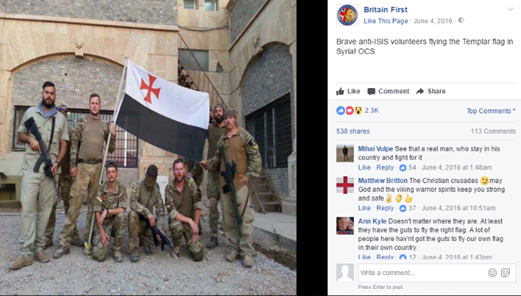
![Poster from Twitter: "We won" [in Persian]](http://dayan.org/sites/default/files/styles/panopoly_image_original/public/we_won_iran.jpg?itok=opZLuxtO)
